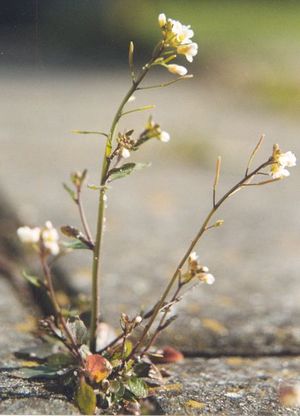In a move that sounds like something out of a science fiction film – or one of those old sci-fi novels/comics that depicted plant life on planets like Venus – NASA has announced plans to try and grow plants on the moon. Yep, the American space agency will blast off for the barren and lifeless rock that orbits our fair planet in an experiment to see if plants can grow there. The experiment aims to find out if plant life can thrive in space, and if so it could pave the way for humans to thrive in space too.

To sow the seeds of greenery in the grey dust of the Moon, NASA is transporting seeds in sealed canisters that are set to head into the darkness above by 2015 and hopefully germinate. The seeds they’ve picked are 10 seeds of basil, 10 of turnip and 100 of Arabidopsis; a small flowering plant that is related to cabbage and mustard. The latter contains thale cress, and as any changes in the cress are easily observed it’s the ideal plant to use for the study.
Once the Moon Express lander – a commercial spacecraft that is competing for Google’s Lunar X-Prize – has landed a small reservoir of water will be released into the canisters containing the seeds. From there NASA will monitor the seeds germination process in an effort to see how it reacts in lunar gravity and the surrounding radioactive environment. There’s enough air inside the canisters to last 5 days, so it’s not a long term experiment. But it’s not like NASA are planting them in soil, it’s simply to see if humans will ever be able to grow plants if a colony is one day established there.
A spokesman for NASA alluded to a “canary in a coal mine” example. If the plants fail to germinate then, like the canary dropping dead from gas, humans would be unlikely to be able to survive there. While the initial experiment only aims to monitor the seeds for 5 to 10 days, comparing them to Earth-based control seedlings that will grow at the same time, future experiments hope to extend the length. If a plant can survive for 14 days on the moon it will demonstrate that plants can successfully grow in the moons radioactive environment.
A plant surviving for 60 days will show that meiosis – the sexual reproduction of a plant – will be able to naturally occur. If the plant manages to survive to 180 days it will show the effects of radiation on the dominant and recessive genetic traits of the plant, and from then on the experiment can carry on for longer and through multiple generations of plant species. The team will monitor progress via photos taken and beamed back to our blue marble.
It’s not the first time that plants have been grown in space; research has been carried out on space shuttles and the International Space Station in the past. However, this will be the first time that a lunar experiment involving plants will be carried out.
Let’s hope that the future is bright and we’ll one day have turnip farmers on the moon!
